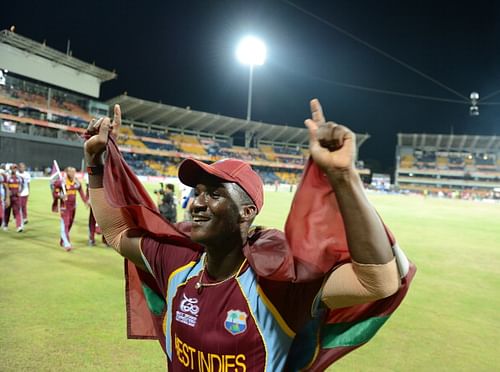
Revisiting the last couple of years of West Indian cricket

Darren Sammy
Amid the fascination that the West Indies usually commands in various phases of history in its cricket, the past decade has added a sense of hurt and disappointment. The last couple of years, however, have been a little different. A competence based less on typical style and flourish but more on discipline and tenacity, the seeds of a tougher, smarter team in the near future, and an inertia that has limited the speed of progress have been the flavours of the side under Darren Sammy.
There have been many losses in the period, but they have shown some real fight as well which has enabled them to capture a world title and challenge the best of teams. There was a renewed interest in watching West Indies take the field, not always for the drama behind the end result but for the spice in battles within the war.
It has not been long since Sammy was appointed the captain. While the team performed better than expected in the 2011 World Cup under his captaincy, his first major assignment after taking over the team, it was not known then that it would be the start of a journey.
At the back of what seemed to be an inevitable defeat against South Africa in Delhi, Sammy spoke about having self-belief. “We’re just a win away. As long as we play to our potential, we can beat any team on that day.” They tried to translate thoughts into action and performed well against lower-ranked teams, the highlight being bowling Bangladesh out for 58 and getting their bus pelted by the local fans in Dhaka, while travelling in it after the game.
But they squandered winning positions in spectacular fashion, a habit that would haunt them for some time. Against England in the World Cup 2011, they lost four wickets for three runs to end up losing a game they had all but secured. Chasing 269 to win against India in their last group game, they were bowled out for 188 from being 157 for 3 at a stage.
Cricket Analyst and former West Indian fast bowler Ian Bishop reckoned it would take time for them to overturn their mental block. But despite this handicap, the team conjured some memorable battles in the months to come.
There were new members of the team who helped them do this, one of them being spinner Devendra Bishoo. He added quality spin to a decent seam attack, and the team secured their first Test win in more than two years, surprising Pakistan in Guyana. The win seemed like a flash in the pan as Pakistan won the next Test with ease, and India, devoid of some of their top stars, eked out a 1-0 win in the subsequent Test series.
The loss against India wasn’t too painful, though. The observations of India’s new coach Duncan Fletcher – cohesion in the side and a sense of purpose in the intense practice sessions – seemed to suggest a possible turnaround. Their batting was still shaky, but while on the field, they tried to make amends and show a greater spirit in not giving up.
Considering the difference in quality between the sides, the scoreline represented a mitigation of the expected hammering. There were lots of holes to be plugged, but there was a reassurance that efforts were being made to rectify this. Complacency, however, could lead them to consider the series result as being satisfactory, but once they tour India later that year, it would all come to light.